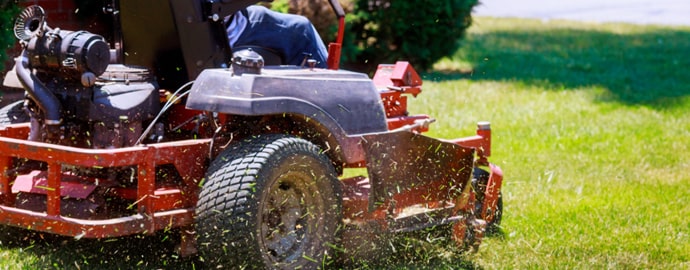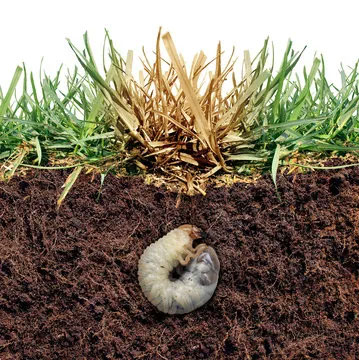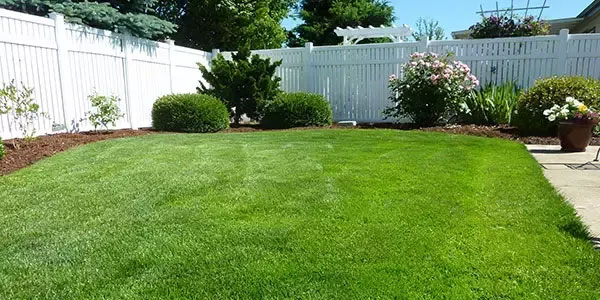Protecting Your Yard From Outdoor Pests
1. Identify
Lawn insect identification requires a lot: the lawn pest’s appearance, a description of the damage caused, the region and time of year, and what type of turf grass is planted—it can be difficult. Here’s what our experts look for when identifying the lawn-destroying insects.
Signs of Lawn-damaging Insects
You can spot insect damage from drought stress or lawn disease by the following:
Turf species. Some insects won’t attack a certain turf species—for example, Chinch Bugs don’t attack Tall Fescue and are rarely a problem in Bermudagrass.
Season. Insects are seasonally active—for instance, Sod Webworms are active throughout the summer, whereas White Grub damage occurs in fall.
Location. Lawn-damaging insects prefer actively growing turf and avoid shade, so search the good turf around damaged areas for insect activity.
Shape. Grass damage from lawn pests is often irregularly shaped—perfect circles are rarely caused by an insect.
Identifying Lawn-destroying Insects
Once you find and catch a suspect, stick it on a clear piece of tape or in a sealable plastic bag so you can examine and/or show it to us.

2. Life Cycle
Lawn-destroying insects all start as eggs, but they differ in how often they shed exoskeletons to form larger ones—it depends on the species. Because lawn insects are cold-blooded, they can’t self-regulate heat either, so soil and air temperature further affect metamorphosis.
What Are the Two Types of Lawn Insect Metamorphosis?
Lawn pests go through metamorphosis—meaning a change in form—as they grow and develop. There are four major types of metamorphosis, but for lawn-damaging insects, only two are significant: complete and incomplete metamorphosis.
Complete Metamorphosis
Beetles that begin life as grubs or moths that begin life as caterpillars are both good examples of lawn insects undergoing complete metamorphosis. Other common lawn-damaging insects of this type include Sod Webworms, Cutworms and White Grub species such as the Japanese Beetle, Oriental Beetle, Masked Chafer and Sugar Cane.
- Includes four distinct life stages: egg, larva, pupa and adult
- Insect larvae look very different in form and shape than adults
- Larvae damage turf grass the most as they feed, grow and molt
- Larvae transform into pupae and then don’t move or feed
- Pupae hide in protected, secluded spaces as they transform into adults
- When fully mature, adults emerge from pupal casings and lay eggs of their own
- Incomplete Metamorphosis
These lawn-destroying insects continuously increase their populations during your outdoor enjoyment season, so they can reach turf grass-damaging levels quickly—two prime examples include the Chinch Bug and Mole Cricket. Routine scouting, early identification and rapid response control are essential to preserving your lawn’s health.
- Only three life stages: egg, nymph and adult—nymphs molt and grow many times
- Nymphs—or immature adults—resemble adults from day one, only smaller in size and sometimes color
- At each molt, a nymph’s wing buds grow more and more pronounced
- Once the nymphs are fully winged, they are sexually mature adults
- Nymphs and adults feed on the same host together for their entire life cycles
- These lawn pests can be controlled as nymphs or adults—but not as eggs
3. Control with help from Advanced
Lawn-destroying insects can infest soil and roots, feed on leaves and stems, or suck the moisture out of grass. Controlling lawn pests requires a multitiered attack: selection, prevention, management and treatment. To protect your yard from lawn insects, keep your grass healthy so you can live life outside—bug-free.
Four Steps We Suggest for Controlling Lawn Pests
Selection. Choose the best turf grass species for your climate and region, preferably one that isn’t as susceptible to local lawn-damaging insects. For example, some types of Tall Fescue, Creeping Red Fescue and Perennial Ryegrass have microscopic fungi that ward off above-ground lawn pests.
Prevention. A healthy lawn needs little to no pesticide treatment. Look toward proper mowing, watering, irrigation and fertilization tactics to curb lawn-damaging insect infestations.
Management. Other things you can do to prevent and control lawn insects include removing thatch and promoting naturally occurring predators and parasites that feed on lawn-damaging insects—install birdhouses or look into beneficial nematodes.
Treatment. If lawn pests have started damaging your lawn, we’re ready to fight back for you. We can help you determine what insect you’re dealing with by the type of lawn damage and then apply the proper treatment option(s). Common culprits include: White Grubs and beetles that infect soil and roots; Armyworms and Billbugs that feed on leaves and stems; Chinch Bugs and mites that suck plant juice; as well as other nondamaging pests that you want gone, like mosquitoes, ticks and chiggers.
For help getting rid of grass-eating insects, contact us today and reclaim your yard from lawn pests.



